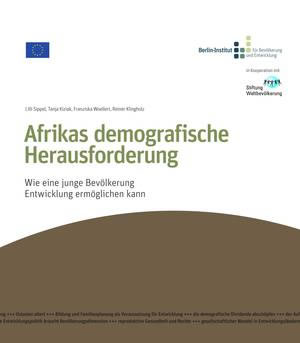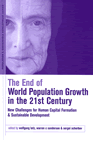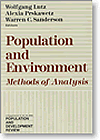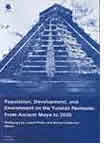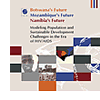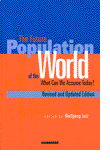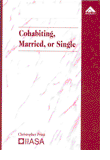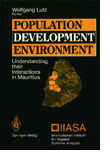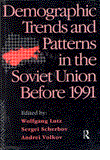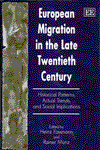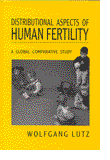|
 The New Generations of
Europeans The New Generations of
EuropeansDemography and Families in the Enlarged European Union Edited by Wolfgang Lutz, Rudolf Richter and Chris Wilson, © IIASA and Earthscan 2006 About the Editors Europe today is characterized by changing family patterns, dropping fertility rates and mass migration. With the potentially massive ramifications this has for pensions, health, housing, transport, family relations, employment and other sectors of society, The New Generations of Europeans sets out to assess what it is to be a citizen of a growing EU and what important demographic, social, and economic issues will have to be faced by European decision makers. Edited by leading demographers and sociologists, and made up of contributions from respected researchers in the fields of population and society from different parts of Europe, it presents the results of five years of research by the European Observatory on the Social Situation, Demography and the Family. With the aid of over 100 graphs and tables and a full discussion, this book asks how numerous, fertile and long-lived the new generations of European citizens will be. The state of families, immigration and health are all examined, especially in the context of the challenges that will be faced in maintaining social cohesion. Crucially, the question of how demographic changes will impact Europe’s socioeconomic infrastructure is woven throughout.
For the table of contents click here The volume addresses these challenges in a number of ways. It produces probabilistic population forecasts for the world and 13 major regions and introduces new ways of analyzing the uncertainty of these forecasts. It integrates human capital and sustainable development with population change and shows how combining the three provides a new way of unifying our understanding of demographic developments in the 21st century. The book contains chapters on probabilistic population forecasting; integrated forecasts of population and education changes in world regions; the use of literate life expectancy as an indicator of social development; the interactions between population, the environment, and agriculture in Ethiopia; the effects of education on trends in HIV prevalence in Botswana; China’s future rural and urban population by education; population, greenhouse gases, and climate change; and a new conceptual framework that combines considerations of population growth, age structure, human capital, and the environment and shows that the problems of rapid economic growth and rapid aging can be formulated and analyzed within a unified framework. We call this approach to thinking about 21st century demographic issues “population balance.” Summary,
Table of Contents, and ordering information 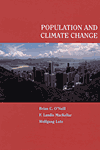
Brian C. O'Neill, F. Landis MacKellar and Wolfgang Lutz. 2000.
Population and Climate Change. Praise for Population and Climate Change "A balanced, accessible, and highly informative review and
analysis of one of the most critical environmental issues we face
in the 21st century. Indispensable reading for researchers and policymakers
with an interest in population and environment relationships." "... a well argued and comprehensive treatment of the role
of population in the climate change debate that belongs on the shelf
of everyone who is seriously intrested in climate policy." "This is the first systematic, quantitative work to be done on
population, climate, and the environment. It is expert, thorough,
and, what is most pertinent, believable. It will prove to be the
starting point for anyone who wishes to understand and work on this
most important of problem areas." Summary, Table of Contents, and click here to order the book at IIASA
Download or read the report in PDF
format. To order a hard copy from IIASA, click
here.
This report was part of an IIASA project on Evaluating Alternative Paths for Sustainable Development in Botswana, Mozambique and Namibia, which developed an interdisciplinary computer model and evaluated alternative policy scenarios for the country. The project was funded by the European Commission through the Directorate General for Development. The table of contents including abstracts can be viewed at www.iiasa.ac.at/Research/POP/pub/namibia.html/ This report can be downloaded in PDF format, and hard copies are available from IIASA, priced at a handling charge of US$ 20. To order the report from IIASA, click here.
This revised and updated version incorporates completely new scenario
projections based on updated starting values and revised assumptions,
plus several methodological improvements. It also contains the best
currently available information on global trends in AIDS mortality
and the first ever fully probabilistic world population projections.
The projections, given up to 2100, add important additional features
to those of the UN and the World Bank: they show the impacts of
alternative assumptions for all three components (mortality and
migration, as well as fertility); they explicitly take into account
possible environmental limits to growth; and, for the first time,
they define confidence levels for global populations. Combining
methodological innovation with overviews of the most recent data
and literature, this updated edition of The Future Population
of the World is sure to confirm its reputation as the most comprehensive
and essential publication in the field.
The development in the island state of Mauritius over the past 30 years can serve as an example of how adverse conditions can be overcome. In the early 1960s Mauritius was trying to cope with rapid population growth, extreme poverty, and grim economic prospects. In 1990 the situation was radically different. Although population density had increased, total fertility had dropped dramatically and the GNP per capita had risen to $2310. Economic stagnation had been replaced by steady growth and full employment, and environmental problems were being addressed as issues of high priority. These developments attracted IIASA's attention. With the assistance of the UN Population Fund and the cooperation of the Government of Mauritius, IIASA and the University of Mauritius set out to develop a computer-based model to demonstrate the interaction among population dynamics, socioeconomic development, and environmental factors. This book provides a detailed report of their findings.
Migration in Europe is a pressing social and political issue for
the policy makers of the 1990s. Drawing upon a wide body of language,
expertise and analysis, the book combines an important survey with
a series of detailed country studies on migration in Europe. The
authoritative overview essay by the editors examines migration to
and within Europe. They compare the flow during the last forty years
with the present situation, detailing both the magnitude and geography
of migration over this period. This is followed by thirteen individual
country studies each of which features a historical introduction
to emigration and immigration in the featured country, quantitative
data sets and a detailed assessment of the social and political
implications. These studies- specially prepared by leading scholars-
cover the United Kingdom, France, Germany, The Netherlands, Switzerland,
Italy, Israel, Austria, Hungary, Poland, Bulgaria, the former Yugoslavia,
and the former USSR. This comprehensive and scholarly book will
be welcomed by teachers and researchers of social sciences and history
for presenting new insights into one of the key political, social
and economic issues facing modern Europe.
This book provides a state-of-the-art report on what demographers
and scientists in related disciplines assume today about the future
of human reproduction, longevity, and migration. Alternative views
are translated into several scenarios on possible future population
structures in Europe and North America.
This is the first comprehensive study of global fertility distributions using a unifying methodology, taking data from the World Fertility Surveys of developed and less-developed countries. The study focuses on parity-specific fertility analysis, which is becoming increasingly important as family planning measures are seen to affect fertility trends.
|
Responsible for this page: Suchitra Subramanian
Last updated:
16 Sep 2011
Phone: (+43 2236) 807 0
Copyright © 2009-2011 IIASA
